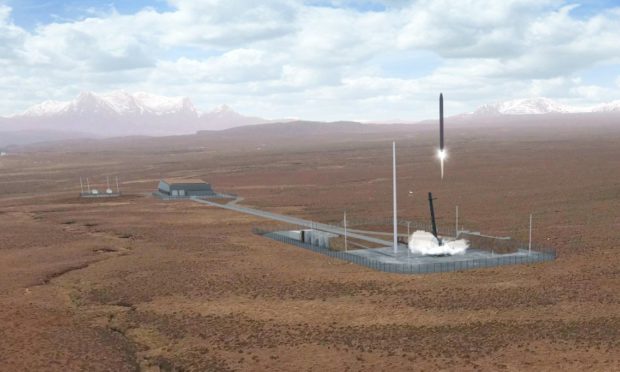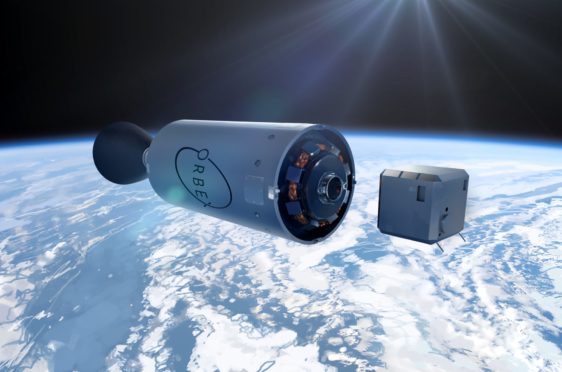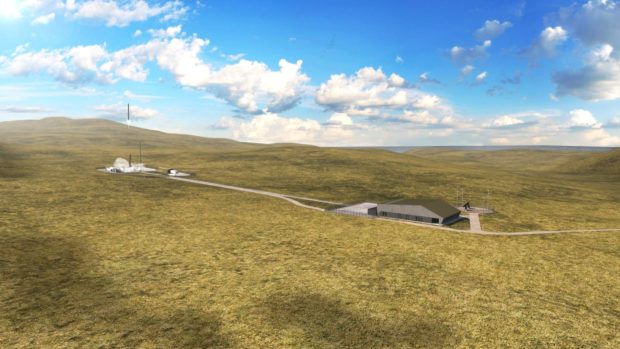Plans to send rockets carrying satellites into orbit from the Highlands received a major boost from a legal ruling this month.
When an objection by a company owned by billionaire Anders Holch Povlsen was thrown out, it was hailed as an important step in the bid to develop the UK’s first vertical launch spaceport in the far north.
The decision kept the £17.3million Space Hub Sutherland (SHS) project, on the remote A’Mhoine peninsula, in pole position in the region’s mini space race.
With Scotland aiming to win a £4billion share of the lucrative global space market by 2030, there are also plans to develop launch facilities on North Uist, in the Outer Hebrides, and the Shetland island of Unst.
Mr Povlsen’s Wildland company, which owns tens of thousands of acres neighbouring the SHS site, says its view that the development will be “completely inappropriate for such an environmentally vulnerable are and the habitats it sustains,” is shared by many people.
Highlands and Islands Enterprise (HIE), which is leading the project, argues that it will “provide high quality local jobs and create vital infrastructure to support the growth of the UK space sector in Scotland.”
The Scottish Government-funded agency also says that care for the natural environment has always been a “key part” of its plans.
In Moray, rocket maker Orbex is finalising a detailed planning application for a new factory employing hundreds of workers in Forres as it prepares for regular commercial launches from SHS.
The SHS, development, between Durness and Tongue, has been three years in the planning and now appears to be gaining real momentum.
We explain its progress so far – and how recent events could signal more than one small step for A’Mhoine.
How was the spaceport site chosen?
The UK Government announced the choice of A’Mhoine as the site of the UK’s first vertical launch spaceport in July 2018, following a bidding process run by the UK Space Agency (UKSA).
Key criteria considered for launches centred on sites’ suitability for rockets reaching “sun synchronous” orbits (SSO) without flying over land inhabited by humans.
A’Mhoine was one of three areas in the running, along with Scolpaig, in North Uist and Saxa Vord, on Unst, which missed out on the bidding process.
The site will occupy up to 13 acres of crofting land, owned and managed by Melness Crofters’ Estate, which has given HIE a lease option for the project.
Plans for the projects in Shetland, now known as SaxaVord Spaceport, and Spaceport1, in the Outer Hebrides, are continuing to be developed.
What is planned at the site?
Up to 12 rocket launches-a-year are planned for the spaceport, to carry payloads of small satellites into orbit for civilian commercial customers.
Plans for the site itself will include an assembly building with ancillary structures, a launch and operations control centre, and access roads
There will also be antenna farms, fuel storage facilities, a launch pad complex and towers, as well as safety and security fencing and associated infrastructure.
HIE expects there will be around 40 people employed on-site.
Who is paying to develop the spaceport?
HIE was given an initial £2.5m by the UKSA to take the project forward.
The Scottish Government-funded development agency has agreed in principle to commit £9.8m of its funds to the project.
The remainder is being sought from the Nuclear Decommissioning Authority (NDA) , which owns the former nuclear power research and development facility at Dounreay, near Thurso.
What has happened since 2018?
HIE was granted planning permission for the development by Highland Council a year ago.
A judicial review of the decision was triggered by Anders Holch Povlsen’s Wildland company, which said the proposal had failed to consider the environmental impacts of proposed visitor facilities, how visitors would be managed and the impact on wildlife.
The firm also questioned if correct legal procedures had been followed.
After hearing evidence at the Court of Session, Lord Doherty ruled against Wildland on every count earlier this month.
HIE welcomed the decision, which it said brought the “prospect of small satellites being launched from Scotland in the near future a step closer to reality.”
What stage is the development at now?
HIE is currently awaiting a decision from the Scottish Land Court, which is necessary as the planned development is on crofting land.
The agency applied there immediately after the council decision was confirmed last August and is hopeful the outcome will be “delivered shortly.”
It is continuing to carry out due diligence in preparation for a full business case for the project being presented to its board, before going to Scottish Ministers for final approval. No date for the board’s meeting has been given.
It is also waiting for the results of specialist survey work at the site, which started in May.
When will the first rocket blast off in the north?
Although no date has been set for the start of the spaceport’s construction, Orbex chief executive Chris Larmour is confident of achieving the firm’s target to launch its first Prime rocket from the site next year.
He said: “If HIE and the operator can get to construction even by early next year, we can certainly get something in place and be launch ready by the end of 2022 – I’m sure of that.”
The company is currently applying for launch licenses, after the UK Government finalised regulations in July.
Mr Larmour added: “We have status meetings every week on all the tracks of what is a very complex project and currently we are on track right now.”



